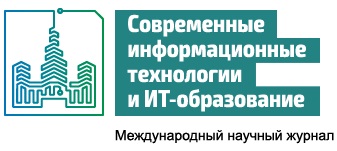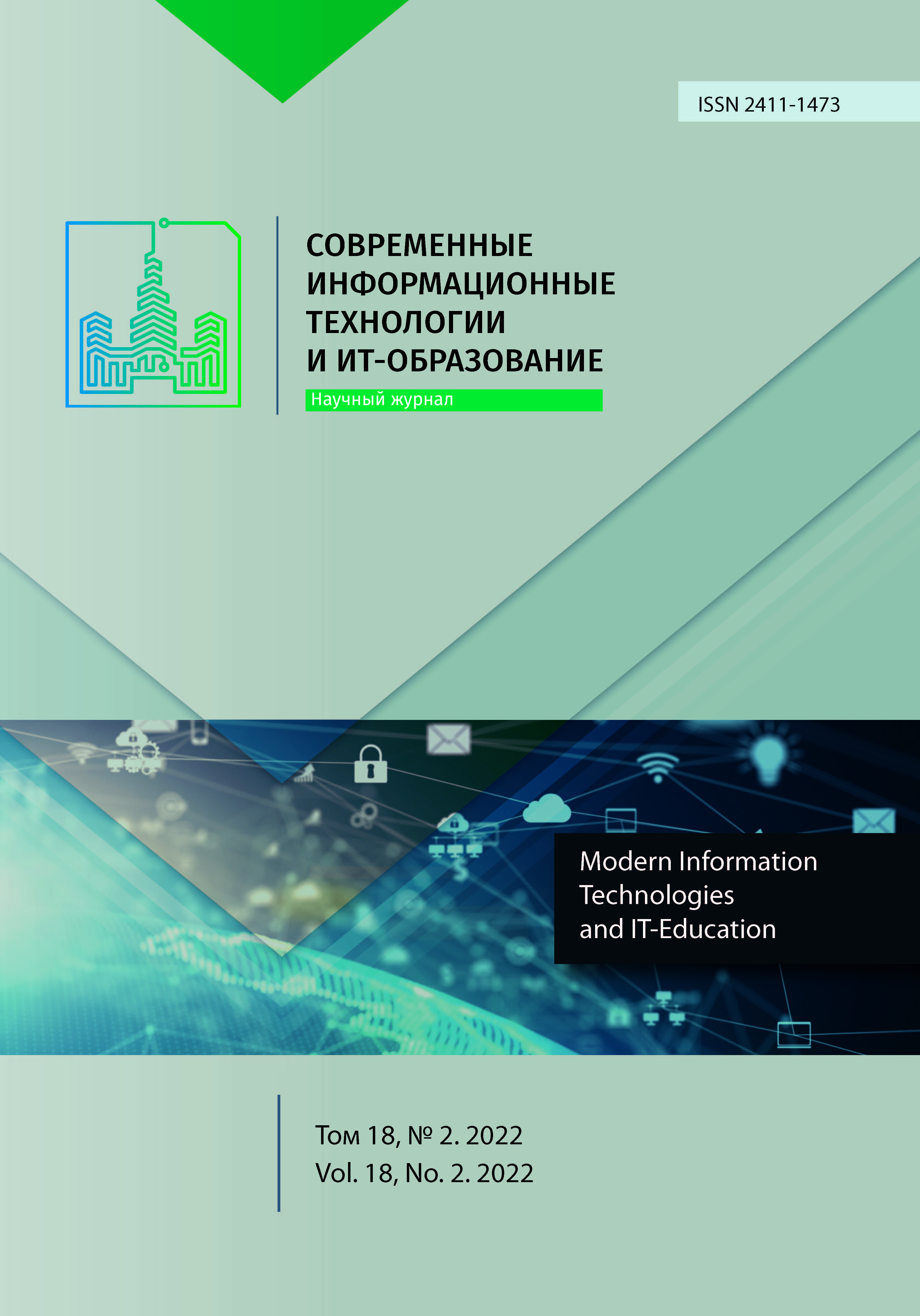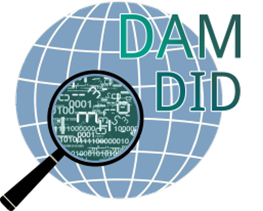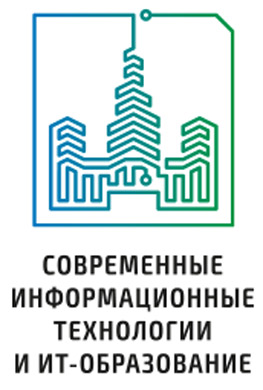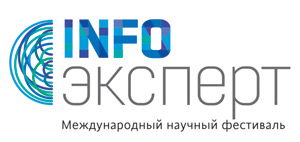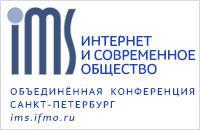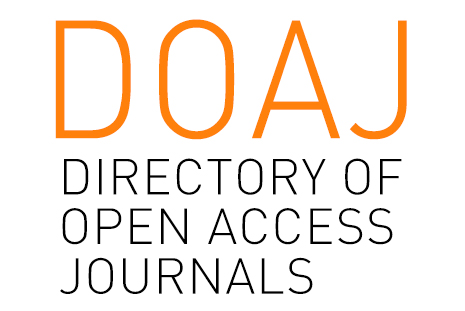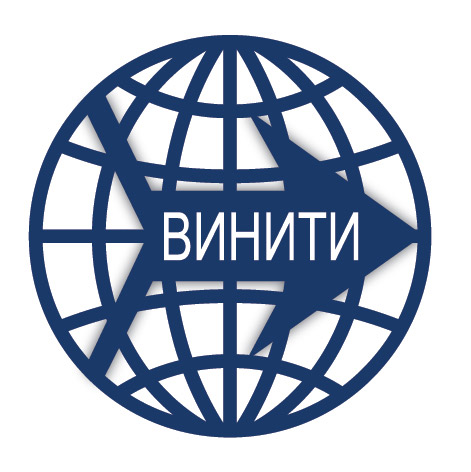Об исследовании имитационной математической модели сложной технической системы в современных системах компьютерной математики
Аннотация
Исследование функционирования сложных технических систем является одной из центральных задач математического и компьютерного моделирования. В настоящее время разработано большое число подходов к решению этой задачи. Одним из таких подходов является имитационное моделирование. Он применим, в частности, в случае, если объектом исследования является дискретная система со стохастическим характером функционирования. В настоящей работе рассматривается построение такой модели на примере функционирования сложной технической системы, с учетом влияния результатов функционирования систем имеющих противоположные цели, а также технических и функциональных характеристик участников процесса, что делает их привлекательными для анализа поведения того или иного фактора, влияющего на эффективность функционирования и выполнения задач по предназначению.
Очевидно, что характер данного процесса позволяет рассматривать его как процесс массового обслуживания. Это предопределяет гипотезу о пуассоновских входящих потоках заявок и потоках восстановления, циркулирующих внутри системы.
Процесс компьютерного моделирования таких систем представляется весьма сложным для его реализации на ЭВМ, поскольку число состояний велико. С появлением современных систем компьютерной математики, в частности, системы Wolfram Mathematica, возможности исследования таких моделей значительно возрастают. При этом Wolfram Mathematica позволяет исследовать системы двумя способами: составить уравнения Колмогорова для вероятностей состояний системы в явном виде и получить их аналитические или численные решения либо построить матрицу скоростей переходов и использовать команду системы, предназначенную для анализа марковских процессов с непрерывным временем.
Применение предлагаемого подхода позволяет построить модель процесса функционирования сложной технической системы с учетом основных факторов, влияющих на исход противоборства, принятых в вероятностной форме, что позволяет решать с ее помощью различные оптимизационные задачи.
Литература
2. Cherkesov G.N., Nedosekin A.O. Description of approach to estimating survivability of complex structures under repeated impacts of high accuracy. Nadëžnostʹ = Dependability. 2016; (2):3-15. (In Russ., abstract in Eng.) doi: https://doi.org/10.21683/1729-2646-2016-16-2-3-15
3. Bernardi S., Dranca L., Merseguer J. A model-driven approach to survivability requirement assessment for critical systems. Proceedings of the Institution of Mechanical Engineers, Part O: Journal of Risk and Reliability. 2016; 230(5):485-501. (In Eng.) doi: https://doi.org/10.1177/1748006X15626017
4. Azarenok I.P., Pet'kov A.A. Konceptual'nye podhody k postroeniyu sistemy protivovozdushnoj oborony gosudarstva [Conceptual approaches to the construction of the state air defense system]. Nauka i voennaya bezopasnost' = Science and Military Security. 2007; (4):13-18. Available at: http://militaryarticle.ru/nauka-i-voennaya-bezopasnost/2007/11995-konceptualnye-podhody-k-postroeniju-sistemy (accessed 19.05.2022). (In Russ., abstract in Eng.)
5. Popov B.E., Kubrin G.S., Shul'deshov L.S. Modelirovanie korabel'nogo protivovozdushnogo boya s primeneniem metoda linejnogo programmirovaniya [Modeling of naval anti-aircraft combat using the linear programming method]. Nedelya nauki SPbSTU = Week of Science. SPbSTU, SPb; 2018. p. 391-393. Available at: https://www.elibrary.ru/item.asp?id=32820525 (accessed 19.05.2022). (In Russ.)
6. Mustafaev N.G., Leontyev R.V., Idilieva Ye.V. Sostoyanie i perspektivy imitacionnogo modelirovaniya ispytanij avtomatizirovannyh sistem upravleniya protivovozdushnoj oborony [The condition and prospects of imitation modeling for the trials of automated control systems of air defense]. Voennaya mysl' = Military Thought. 2021; (2):98-106. Available at: https://www.elibrary.ru/item.asp?id=44821753 (accessed 19.05.2022). (In Russ., abstract in Eng.)
7. Stepanov V.V. Modelirovanie konturov boevogo upravleniya silami i sredstvami bor'by s vozdushnym protivnikom nadvodnyh korablej s primeneniem metodov iskusstvennogo intellekta [Modeling the contours of the combat control of forces and means of combating the air enemy of surface ships using artificial intelligence methods]. Aktual'nye problemy zashchity i bezopasnosti. RARAN, SPb; 2021. 3:33-39. Available at: https://www.elibrary.ru/item.asp?id=46476573 (accessed 19.05.2022). (In Russ.)
8. Shcherbakov E.S., Dorozhkin A.D., Kolyvanov A.V. Potencial'nye vozmozhnosti prognozirovaniya hoda i iskhoda boevyh dejstvij s primeneniem razlichnyh vidov matematicheskih modelej [Potential possibilities of predicting the course and outcome of hostilities using various types of mathematical models]. Imitacionnoe modelirovanie. Teoriya i praktika. ICS RAS, Moscow; 2015. p. 404-408. Available at: https://www.elibrary.ru/item.asp?id=25420661 (accessed 19.05.2022). (In Russ.)
9. Bogdanov O.A., Smirnov A.A., Kovalev D.V. Imitacionnoe modelirovanie protivoborstva v vozdushno-kosmicheskoj sfere [Imitation modeling for aerospace confrontation]. Programmnye produkty i sistemy = Software & Systems. 2016; (1):160-165. (In Russ., abstract in Eng.) doi: https://doi.org/10.15827/0236-235X.113.160-165
10. Selivanov V.V., Ilyin Yu.D. The effect of survivability on the combat and military-economic efficiency of military technical systems. Voennaya mysl' = Military Thought. 2021; (9):99-112. Available at: https://www.elibrary.ru/item.asp?id=47108863 (accessed 19.05.2022). (In Russ., abstract in Eng.)
11. Chuev V.Yu., Dubogray I.V. Stochasticism and Determinism in Simulation Bilateral Warfare. Vestn. Mosk. Gos. Tekh. Univ. im. N.E. Baumana, Estestv. Nauki = Herald of the Bauman Moscow State Tech. Univ., Nat. Sci. 2017; (4):16-28. (In Russ., abstract in Eng.) doi: https://doi.org/10.18698/1812-3368-2017-4-16-28
12. Hugaeva M.V., Cahoeva A.F. Modelirovanie ekonomicheskih sistem na osnove markovskih sluchajnyh processov [Modeling economic systems based on Markov random processes]. Byulleten' Vladikavkazskogo instituta upravleniya = Bulletin of the Vladikavkaz Institute of Management. 2017; (52):159-164. Available at: https://www.elibrary.ru/item.asp?id=32824529 (accessed 19.05.2022). (In Russ.)
13. Lubentcova V.S., Efremov A.V. Modelirovanie proizvodstvennoj programmy avtotransportnogo predpriyatiya s ispol'zovaniem markovskih sluchajnyh processov [Modeling the production program of a motor transport enterprise using Markov random processes]. Vestnik Samarskogo gosudarstvennogo tekhnicheskogo universiteta. Seriya: Fiziko-matematicheskie nauki = Journal of Samara State Technical University, Ser. Physical and Mathematical Sciences. 2002; (16):155-160. (In Russ., abstract in Eng.) doi: https://doi.org/10.14498/vsgtu114
14. Permyakova M.A., Permyakova O.V. Veroyatnostnyj podhod k proektirovaniyu SZI s primeneniem markovskih processov [Probabilistic approach to the design of IPS using Markov processes]. Aktual'nye problemy sovremennoj nauki, tekhniki i obrazovaniya. 2017; 1:214-217. Available at: https://www.elibrary.ru/item.asp?id=29929896 (accessed 19.05.2022). (In Russ.)
15. Zelentsov B.P. Correlations between states and events in the simulation of dependability using Markov processes. Nadëžnostʹ = Dependability. 2022; 22(1):38-43. (In Russ., abstract in Eng.) doi: https://doi.org/10.21683/1729-2646-2022-22-1-38-43
16. Petrovsky E.A., Gagina M.V. Primenenie metodov markovskih processov dlya modelirovaniya nadezhnosti i riska oborudovaniya neftegazovogo kompleksa [Application of Markov Process Methods for Reliability and Risk Modeling of Oil and Gas Complex Equipment]. Nadezhnost' i kachestvo. 2015; 2:312-313. Available at: https://www.elibrary.ru/item.asp?id=23907640 (accessed 19.05.2022). (In Russ.)
17. Shcheglov K.A., Shcheglov A.Yu. Korrektnost' markovskih modelej s diskretnymi sostoyaniyami i nepreryvnym vremenem [Correctness of Markov models with discrete states and continuous time]. Izvestiya vysshih uchebnyh zavedenij. Priborostroenie = Journal of Instrument Engineering. 2019; 62(1):40-49. (In Russ., abstract in Eng.) doi: https://doi.org/10.17586/0021-3454-2019-62-1-40-49
18. Koruba Z., Krzysztofik I. An algorithm for selecting optimal controls to determine the estimators of the coefficients of a mathematical model for the dynamics of a self-propelled anti-aircraft missile system. Proceedings of the Institution of Mechanical Engineers, Part K: Journal of Multi-body Dynamics. 2013; 227(1):12-16. (In Eng.) doi: https://doi.org/10.1177/1464419312455967
19. Casar J., Farlik J. The Possibilities and Usage of Missile Path Mathematical Modelling for the Utilization in Future Autonomous Air Defense Systems Simulators. In: Mazal J., Fagiolini A., Vasik P. (eds.) Modelling and Simulation for Autonomous Systems. MESAS 2019. Lecture Notes in Computer Science. Vol. 11995. Springer, Cham; 2020. p. 253-261. (In Eng.) doi: https://doi.org/10.1007/978-3-030-43890-6_20
20. Guo B.-B., An T.-Y., Sun Y.-T. Research on Simulation Design of Air Force Campaign Process Deduction System. The Frontiers of Society, Science and Technology. 2019; 1(8):51-56. (In Eng.) doi: https://doi.org/10.25236/FSST.2019.010809
21. Cui Z., Kirkby J.L., Nguyen D. A general framework for time-changed Markov processes and applications. European Journal of Operational Research. 2019; 273(2):785-800. (In Eng.) doi: https://doi.org/10.1016/j.ejor.2018.08.033
22. Cui Z., Kirkby J.L., Nguyen D. Continuous-Time Markov Chain and Regime Switching Approximations with Applications to Options Pricing. In: Yin G., Zhang Q. (eds.) Modeling, Stochastic Control, Optimization, and Applications. The IMA Volumes in Mathematics and its Applications. Vol. 164. Springer, Cham; 2019. p. 115-146. (In Eng.) doi: https://doi.org/10.1007/978-3-030-25498-8_6
23. Qi W., Zong G., Zheng W. X. Adaptive Event-Triggered SMC for Stochastic Switching Systems With Semi-Markov Process and Application to Boost Converter Circuit Model. IEEE Transactions on Circuits and Systems I: Regular Papers. 2020; 68(2):786-796. (In Eng.) doi: https://doi.org/10.1109/TCSI.2020.3036847
24. Defourny B., Moazeni S. Implied Markov transition matrices under structural price models. Quantitative Finance. 2021; 21(11):1935-1954. (In Eng.) doi: https://doi.org/10.1080/14697688.2021.1921242
25. Hartich D., Godec A. Interlacing relaxation and first-passage phenomena in reversible discrete and continuous space Markovian dynamics. Journal of Statistical Mechanics: Theory and Experiment. 2019; 2019(2):024002. (In Eng.) doi: https://dx.doi.org/10.1088/1742-5468/aaf716

Это произведение доступно по лицензии Creative Commons «Attribution» («Атрибуция») 4.0 Всемирная.
Редакционная политика журнала основывается на традиционных этических принципах российской научной периодики и строится с учетом этических норм работы редакторов и издателей, закрепленных в Кодексе поведения и руководящих принципах наилучшей практики для редактора журнала (Code of Conduct and Best Practice Guidelines for Journal Editors) и Кодексе поведения для издателя журнала (Code of Conduct for Journal Publishers), разработанных Комитетом по публикационной этике - Committee on Publication Ethics (COPE). В процессе издательской деятельности редколлегия журнала руководствуется международными правилами охраны авторского права, нормами действующего законодательства РФ, международными издательскими стандартами и обязательной ссылке на первоисточник.
Журнал позволяет авторам сохранять авторское право без ограничений. Журнал позволяет авторам сохранить права на публикацию без ограничений.
Издательская политика в области авторского права и архивирования определяются «зеленым цветом» в базе данных SHERPA/RoMEO.
Все статьи распространяются на условиях лицензии Creative Commons «Attribution» («Атрибуция») 4.0 Всемирная, которая позволяет другим использовать, распространять, дополнять эту работу с обязательной ссылкой на оригинальную работу и публикацию в этом журналe.
